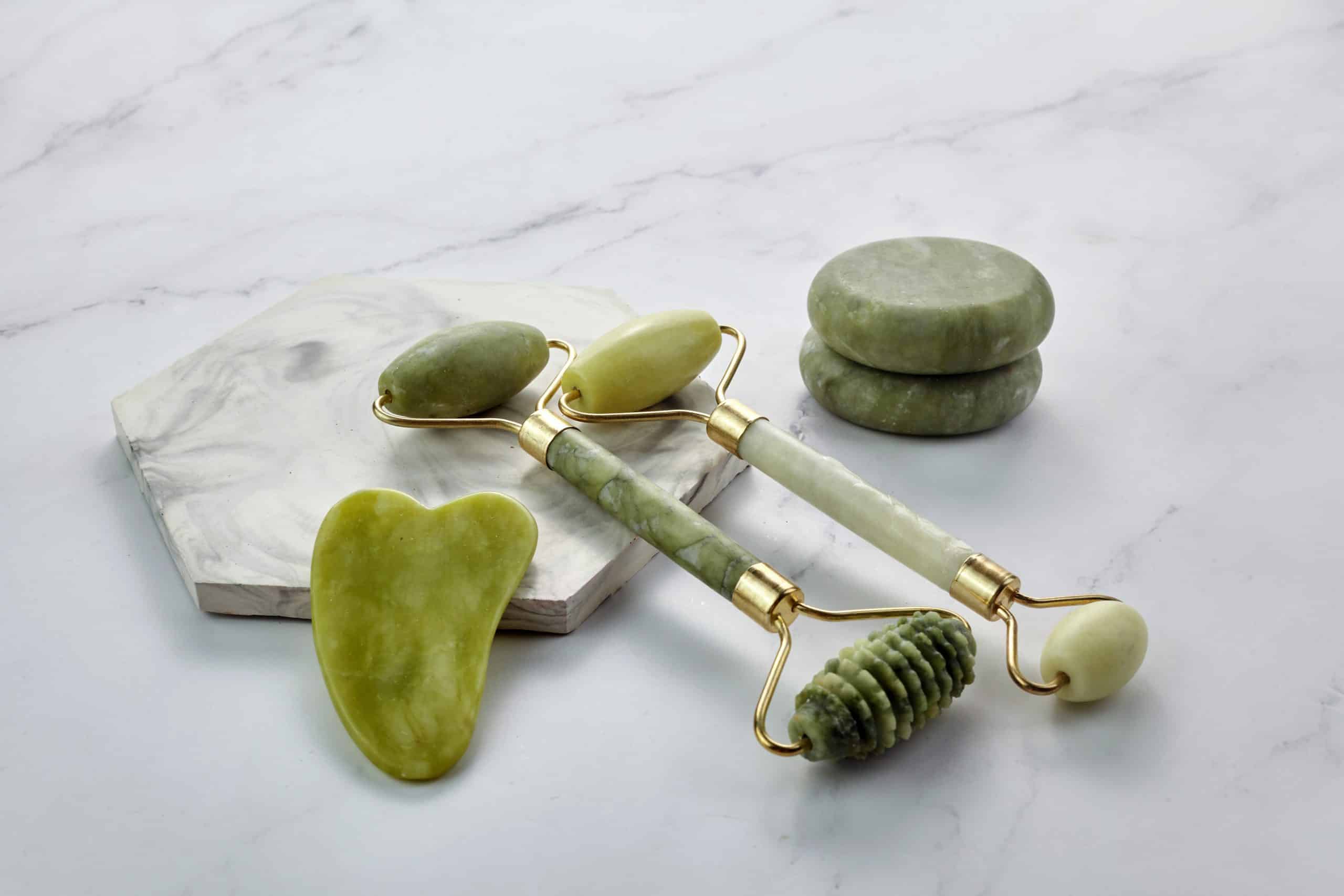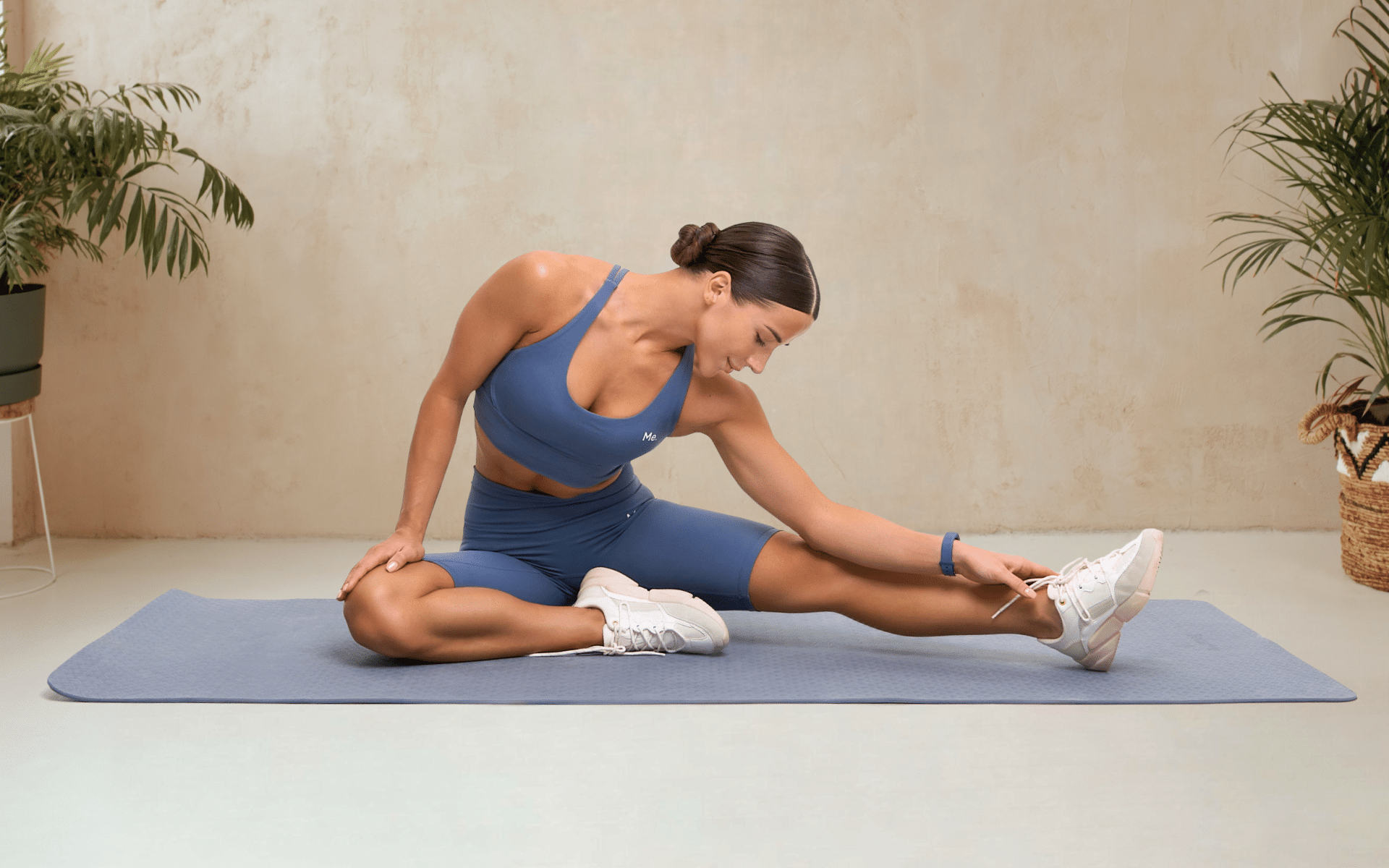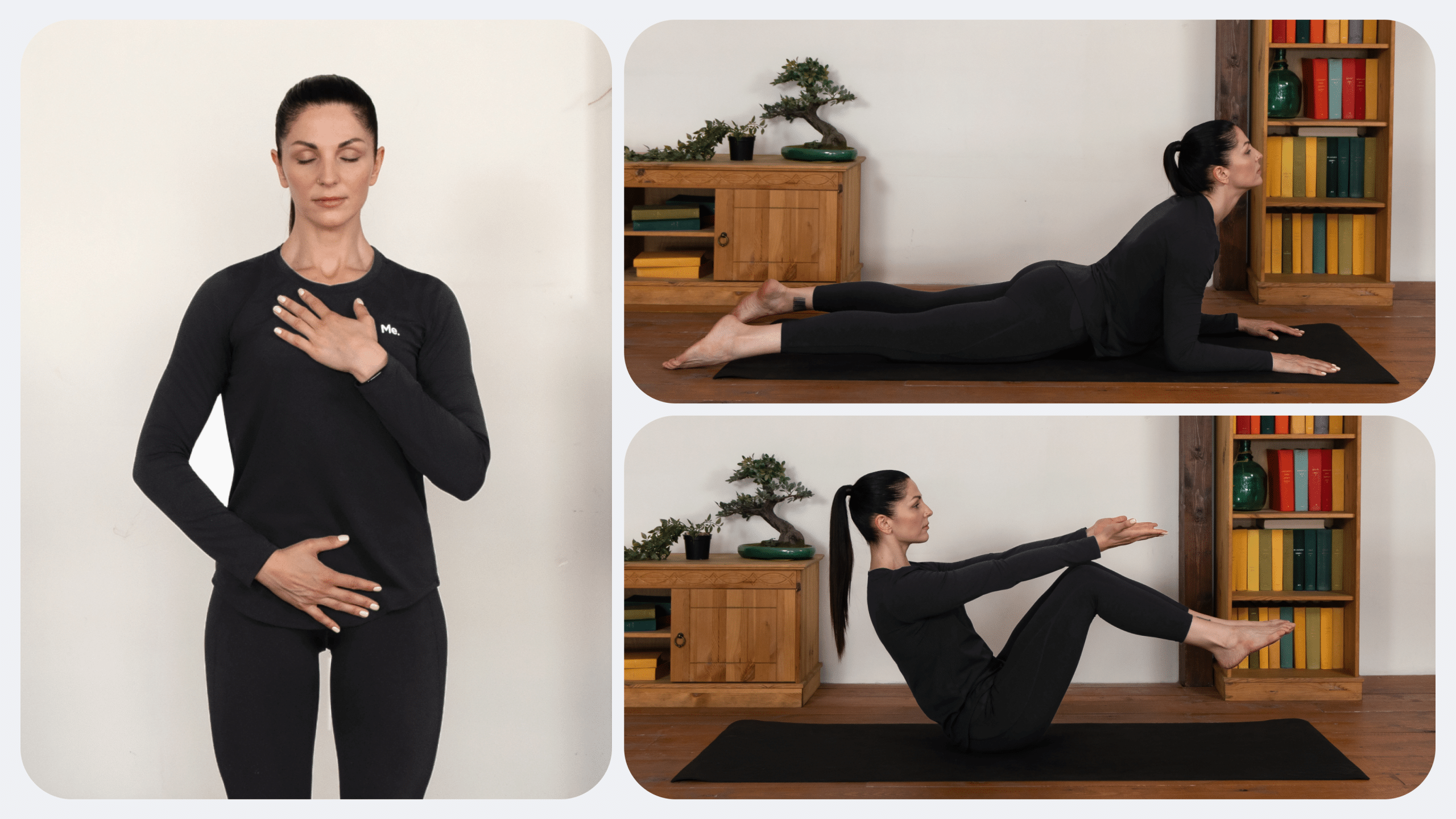The lymphatic system is a network of organs, vessels, and tissues that help your body fight off infections and other diseases by filtering out harmful bacteria, toxins, and other foreign substances. When the lymphatic system is functioning properly, it can help your body stay healthy and balanced. When it is not functioning properly, the buildup of toxins can lead to a variety of health issues. Gua Sha is an ancient Chinese healing technique that has been used for centuries to help improve the function of the lymphatic system. This technique involves applying pressure and gentle strokes to specific areas on the body to stimulate the lymphatic vessels, encouraging drainage and increasing circulation. The use of Gua Sha for lymphatic drainage has a number of benefits, which we’ll share in this article. But first, let’s understand what lymphatic drainage is and why it’s necessary.
Get your personalized
meal plan!
What Is Lymphatic Drainage?
Lymphatic drainage is a type of massage therapy designed to encourage the natural circulation of lymph fluid in your body. To understand why this is important, it helps to know a little bit about the lymphatic system.
The lymphatic system consists of tubes, vessels, and nodes throughout your body that collect fluid, waste products, and toxins from the tissues and transport them to the circulatory system. When these substances are transported to the circulatory system, they are filtered and then either expelled as waste or reabsorbed back into the body (7).
First, we have the lymph nodes, which are small bean-shaped structures located throughout the body. Lymph nodes act as filters, trapping bacteria and other foreign materials that enter the body. They also produce white blood cells (lymphocytes) and antibodies to fight off infection (1).
Lymph nodes are located in the head, neck, armpits, groin, and abdomen. Think of these “gates” as being able to “trap” bacteria and other foreign materials before they reach the rest of the body (1).
Then, we have the lymphatic vessels, which are tubes that carry fluids (lymph) and waste products throughout the body. They bring filtered materials from the lymph nodes to the bloodstream so that they can be eliminated from the body (8).
We’ll focus a little on lymph fluid here, as it’s an important part of the process.
Lymph fluid is a clear, slightly yellowish liquid that contains white blood cells, antibodies, and other immune system components. It helps transport waste products from the body’s tissues to the lymph nodes where they can be filtered out (12).
An important point is, unlike blood that’s pumped through the body by the heart, lymph fluid relies on muscular movement to move through the system. It’s important to stay active and move your body regularly in order to keep the lymphatic system functioning properly.
Last but not least, our lymphatic system is completed by a few other organs; the spleen, thymus (located in the chest), bone marrow, and tonsils. These organs are involved in producing some of the cells needed to fight infection (19).
Blockages in the lymph system can be caused by a variety of things. Some common causes include (17):
- Infections such as the flu or mononucleosis, which can cause swollen lymph nodes.
- An unhealthy diet, lack of exercise, and obesity can lead to fluid retention, which can block the lymphatic system.
- Trauma or injury to the body, such as a broken bone, can cause swelling and blockages in the lymphatic system.
- Surgery can also cause inflammation and blockages to the lymphatic system.
- Cancer and other medical conditions can also cause blockages or other issues with the lymphatic system.
- Some medications, such as steroids and birth control pills, can have an effect on the lymphatic system.
When your lymphatic system is blocked, it can cause a variety of signs and symptoms. The main ones to look out for include:
- Swelling in the arms, legs, or other parts of the body.
- Pain, tenderness, and warmth in the area that’s swollen.
- Skin discoloration (red or purple) near the affected area.
- A feeling of tightness in the skin.
- Painful or swollen lymph nodes.
- Fatigue and general feelings of illness.
- Lower immunity, which can lead to more frequent infections or illnesses.
If you experience any of these signs and symptoms, it’s important to seek medical advice right away. A doctor can help you diagnose and treat whatever is causing the blockage, whether it’s an infection, trauma, or something else.
Treatments for blockages in the lymphatic system vary depending on the cause. Common treatments include (9):
- Antibiotics or other medications to fight infection.
- Anti-inflammatory drugs to reduce inflammation and swelling.
- Surgery to remove a blockage or correct a structural issue.
- Physical therapy to help reduce swelling and improve lymphatic drainage.
- Lifestyle changes like diet and exercise to help improve the lymphatic system.
- Massage to help move lymph fluid and reduce swelling.
- Wearing compression garments, such as compression stockings or sleeves.
These treatments can help reduce blockages and improve the functioning of your lymphatic system.
The best way to prevent blockages in the lymphatic system is to stay healthy, exercise regularly, and eat a balanced diet. By doing this, you can help keep your body’s natural drainage system functioning properly, and hopefully avoid any serious blockages in the future.
Read More: DIY Facial Massage With A Gua Sha Tool: Benefits, Technique & Tips
How Does Gua Sha Help With Lymphatic Drainage?
Gua sha is a safe, non-invasive treatment that can be used to reduce swelling and improve the function of the lymphatic system. The origins of Gua sha date back thousands of years, to ancient China.
The technique involves gently scraping a massage tool over the skin with short strokes, with the purpose of improving circulation and drainage of fluids from the body (4).
Gua sha tools are typically made of jade or other smooth, polished stones. The tool is curved and shaped to fit the contours of the body, allowing for a more precise massage.
The stone’s smooth surface helps to reduce friction, which can cause discomfort or aggravate existing skin conditions.
Some popular materials for gua sha tools are:
- Rose quartz – this stone is known for its healing and calming properties, making it an ideal choice to use during a gua sha massage.
- Amethyst – this vibrantly colored stone is thought to help reduce stress and anxiety. It’s also believed to promote clarity and relaxation
- Jade – this stone is believed to promote positivity and balance while protecting the user from negative energy
- Stainless steel – this durable material is easy to clean, stays cool and provides a firm surface for the gua sha massage
- Bian stone – this type of stone is said to have healing properties and to help reduce inflammation.
How To Use Gua Sha For Lymphatic Drainage
Follow these steps to perform a gua sha massage for lymphatic drainage:
- Begin by washing your hands with warm, soapy water and drying them thoroughly.
- Choose a gua sha tool made of the material that best suits your needs.
- Apply a small amount of massage oil or lotion to the area you wish to work on.
- Hold the gua sha tool at a 45-degree angle to the skin.
- Using light pressure, begin at one end of the area and slowly move toward the other end in long, smooth strokes. For lymphatic drainage, these strokes should be in the direction of your lymph nodes (towards the heart).
- Use short strokes to cover the entire area and then move on to the next section.
- Continue the massage until you’ve covered the entire area, then rinse off the oil or lotion with warm water.
Gua sha can be used on many parts of the body, including the arms, legs, neck, and face. It is important to note that gua sha should not be used on sunburned, broken, infected, or irritated skin (6).
It also should not be used if you have a pacemaker, chronic inflammatory conditions like rheumatoid arthritis, or a history of blood clots.
Reasons why BetterMe is a safe bet: a wide range of calorie-blasting workouts, finger-licking recipes, 24/7 support, challenges that’ll keep you on your best game, and that just scratches the surface! Start using our app and watch the magic happen.
8 Benefits Of Using Gua Sha For Lymphatic Drainage
There have been multiple studies that have demonstrated the effectiveness of gua sha therapy in improving lymphatic drainage.
These studies have linked gua sha to a number of potential benefits, including:
Pain Management
In a 2017 study comparing pain management between gua sha massage and heat compress treatment, it was found that gua sha had a more powerful analgesic (pain-relieving) effect. The effects of the gua sha massage were found to last much longer than those of the heat compress, making it an ideal treatment for chronic pain (16).
The reason for this is that gua sha massage helps to enhance circulation, which can improve the delivery of oxygen and nutrients to sore muscles, while also increasing the release of endorphins (the body’s natural painkillers).
Muscle Relaxation And Recovery
Often, muscles can become sore and tense due to prolonged overuse or underuse. Even if you stretch regularly, it can be difficult to alleviate tightness and discomfort.
Research into massage techniques has shown that the application of light pressure and continuous strokes can help to relax tight muscles, promoting faster recovery and improved range of motion (18).
Gua sha massage can be particularly helpful for athletes as it helps to remove lactic acid from muscles, and also reduces swelling (15). While you’re still likely to experience some post-exercise soreness, it can help speed up the recovery process.
Immune System Boost
The lymphatic system carries a variety of white blood cells that play an important role in the body’s immune system.
By stimulating lymphatic drainage, gua sha massage can help to increase the number of white blood cells, which in turn can help your body fight off infection and illness (5).
In addition, the massage can reduce inflammation, which is beneficial for overall health and well-being (4).
Increased Energy
Gua sha massage stimulates circulation, which helps to deliver oxygen and nutrients to the body’s cells. This can lead to an increase in energy levels, helping you feel more alert and energized throughout the day.
Improved Skin Health
The increased circulation that comes with gua sha massage can also help to improve the appearance of your skin (6).
The massage can help to reduce puffiness, inflammation, and dark circles under the eyes. It also helps to promote collagen production, which helps to keep skin looking youthful and healthy (3).
Gua sha massage can be used to improve facial skin tone by breaking down fatty deposits. As a result, it may reduce wrinkles, sagging skin, and other signs of aging. It can also help to give your skin a more balanced tone by evening out any discolorations or blemishes.
Read More: 7 Amazing Benefits Of Yoga Massage Balls (For Mind And Body)
Reduced Stress
The massage technique can help to reduce stress by stimulating the release of endorphins, which can help to create feelings of relaxation and wellbeing (13).
Research has suggested that massage such as gua sha also helps to reduce levels of cortisol (the stress hormone), making it a great tool for managing stress and anxiety (10).
Improved Digestion
Gua sha massage can help to improve digestion by stimulating the digestive organs and helping to break down food more efficiently. It can also help to reduce inflammation in the gut, which can be beneficial for those with digestive disorders like irritable bowel syndrome (IBS) (14).
Promote Healing Of Peripheral Neuropathy
Peripheral neuropathy is a condition in which the nerves of the body become damaged, leading to pain, tingling, and numbness (11).
Research suggests that gua sha massage can help to reduce the pain and discomfort associated with this condition by promoting healing of the affected nerves. It does so by improving circulation in the area, as well as by reducing inflammation (2).
BetterMe app will provide you with a host of fat-frying fitness routines that’ll scare the extra pounds away and turn your body into a masterpiece! Get your life moving in the right direction with BetterMe!
The Bottom Line
Gua sha can be a great addition to your wellness routine. It promotes lymphatic drainage which, in turn, can boost your immune system, reduce stress, and improve the delivery of oxygen and nutrients throughout the body.
It can also help to speed up muscle recovery, reduce inflammation, improve skin health, and even promote healing of peripheral neuropathy. While it shouldn’t take the place of regular exercise or other forms of self-care, it can be a great supplement to help you feel your best.
DISCLAIMER:
This article is intended for general informational purposes only and does not serve to address individual circumstances. It is not a substitute for professional advice or help and should not be relied on for making any kind of decision-making. Any action taken as a direct or indirect result of the information in this article is entirely at your own risk and is your sole responsibility.
BetterMe, its content staff, and its medical advisors accept no responsibility for inaccuracies, errors, misstatements, inconsistencies, or omissions and specifically disclaim any liability, loss or risk, personal, professional or otherwise, which may be incurred as a consequence, directly or indirectly, of the use and/or application of any content.
You should always seek the advice of your physician or other qualified health provider with any questions you may have regarding a medical condition or your specific situation. Never disregard professional medical advice or delay seeking it because of BetterMe content. If you suspect or think you may have a medical emergency, call your doctor.
SOURCES:
- Anatomy, Lymph Nodes (2022, ncbi.nlm.nih.gov)
- Effect of Gua Sha therapy on patients with diabetic peripheral neuropathy: A randomized controlled trial (2019, sciencedirect.com)
- Effects of a skin-massaging device on the ex-vivo expression of human dermis proteins and in-vivo facial wrinkles (2017, journals.plos.org)
- Exploring scraping therapy: Contemporary views on an ancient healing – A review (2021, ncbi.nlm.nih.gov)
- Gua Sha, a press-stroke treatment of the skin, boosts the immune response to intradermal vaccination (2016, ncbi.nlm.nih.gov)
- Gua‐sha, Jade Roller, and Facial Massage: Are there benefits within dermatology? (2022, onlinelibrary.wiley.com)
- Lymphatic System Flows (2019, ncbi.nlm.nih.gov)
- Lymphatic Vessel Network Structure and Physiology (2018, ncbi.nlm.nih.gov)
- Lymphedema: From diagnosis to treatment (2017, ncbi.nlm.nih.gov)
- Massage Therapy Research Review (2014, ncbi.nlm.nih.gov)
- Peripheral Neuropathy (2023, ninds.nih.gov)
- Physiology, Lymphatic System (2018, ncbi.nlm.nih.gov)
- Roles of β-Endorphin in Stress, Behavior, Neuroinflammation, and Brain Energy Metabolism (2020, mdpi.com)
- The Effect of Abdominal Massage on Gastrointestinal Functions: a Systematic Review (2020, sciencedirect.com)
- The Effect of Gua Sha Treatment on the Microcirculation of Surface Tissue: A Pilot Study in Healthy Subjects (2007, sciencedirect.com)
- The effects of Gua sha on symptoms and inflammatory biomarkers associated with chronic low back pain: A randomized active-controlled crossover pilot study in elderly (2017, pubmed.ncbi.nlm.nih.gov)
- The Lymphatic System in Health and Disease (2013, ncbi.nlm.nih.gov)
- The Role of Massage in Sports Performance and Rehabilitation: Current Evidence and Future Direction (2018, ncbi.nlm.nih.gov)
- What are the organs of the immune system? (2006, ncbi.nlm.nih.gov)












